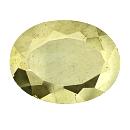|
|
|
|
Click on a letter above to view the list of gems. |
|
|
|
|
|
Pyrite |
|
| Chemistry: FeS2 [Iron Sulfide] | |
| Discovered
in Prehistory;
IMA
status: Valid (pre-IMA; Grandfathered). | ||
|
| ||
|
Classification |
|
|
| |
|
Sulfides | |
|
2/D.17-30 | |
|
|
2 : SULFIDES and SULFOSALTS (sulfides, selenides, tellurides;
arsenides, antimonides, bismuthides; sulfarsenites, sulfantimonites,
sulfbismuthites, etc.) |
|
Related to: |
Pyrite Group. Pyrite - Cattierite Series. Dimorphous with Marcasite. |
|
|
|
|
Crystal Data |
|
|
|
|
|
Typically cubic, pyritohedral, octahedral, and combinations of these and other forms, to 25 cm or more. Striated conforming to pyritohedral symmetry; may be elongated to acicular. Commonly granular, globular, framboidal, stalactitic. |
|
|
On [110], interpenetrating (Iron Cross Law). Twin axis [001] and twin plane [011], penetration and contact twins. |
|
|
|
|
|
Physical Properties |
|
|
|
|
|
[100] Poor, [110] Poor; partings on [011] and [111] |
|
|
Conchoidal to Uneven |
|
|
Brittle |
|
|
6.0 - 6.5 |
|
|
4.80 - 5.02 (g/cm3) |
|
|
None |
|
|
Not Radioactive |
|
|
Other: |
Paramagnetic; a semiconductor. Magnetic after heating. Some fine-grained pyrite is metastable and may alter to melanterite, which contains sulfuric acid. Always wash hands after handling, especially decrepitated material. Avoid inhaling dust when handling or breaking. Never lick or ingest. |
|
|
|
|
Optical Properties |
|
|
|
|
|
Pale Brass Yellow; tarnishes darker and iridescent |
|
|
Opaque |
|
|
Metallic |
|
|
None (opaque) |
|
|
None (opaque) |
|
|
None (opaque) |
|
|
None |
|
|
Rarely |
|
|
|
|
|
Occurances |
|
|
|
|
|
Geological Setting: |
Formed under a wide variety of conditions. In hydrothermal veins as very large bodies, as magmatic segregations, as an accessory mineral in igneous rocks, in pegmatites; in contact metamorphic deposits, also in metamorphic rocks; as diagenetic replacements in sedimentary rocks. |
|
Common Associations: |
Arsenopyrite, Barite, Calcite, Chalcopyrite, Fluorite, Galena, Hematite, Marcasite, Pyrrhotite, Quartz, Sphalerite; many sulfides and sulfosalts. |
|
Common Impurities: |
Ni, Co, As, Cu, Zn, Ag, Au, Tl, Se, V |
|
Type Locality: |
None (Prehistoric) |
|
Year Discovered: |
Prehistoric |
|
View mineral photos: | |
|
|
|
|
More Information |
|
|
|
|
|
| |
|
|
|
|
Marcasite
is available from many localities worldwide. |
|
|
We
have not photographed our Pyrite
gems. Please
check back soon. |
